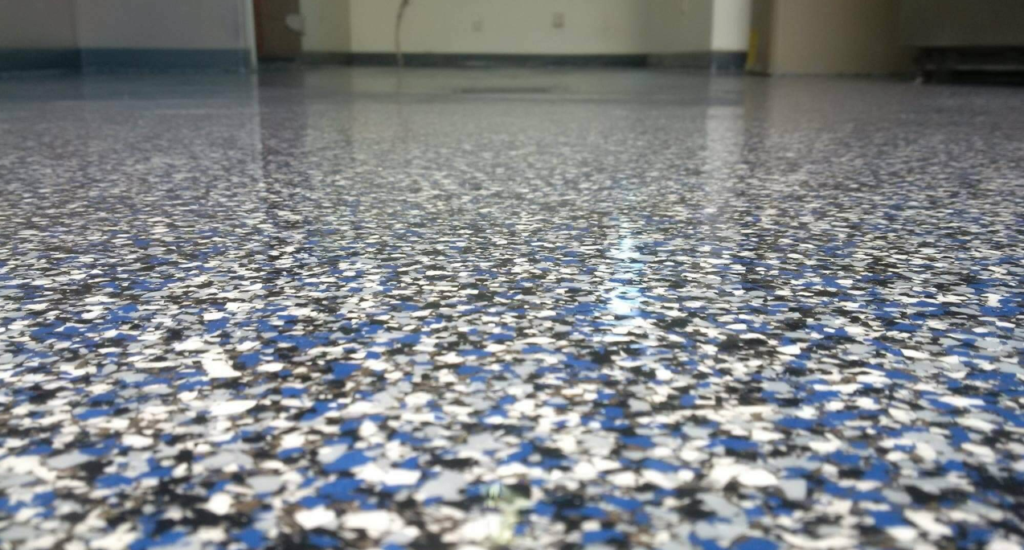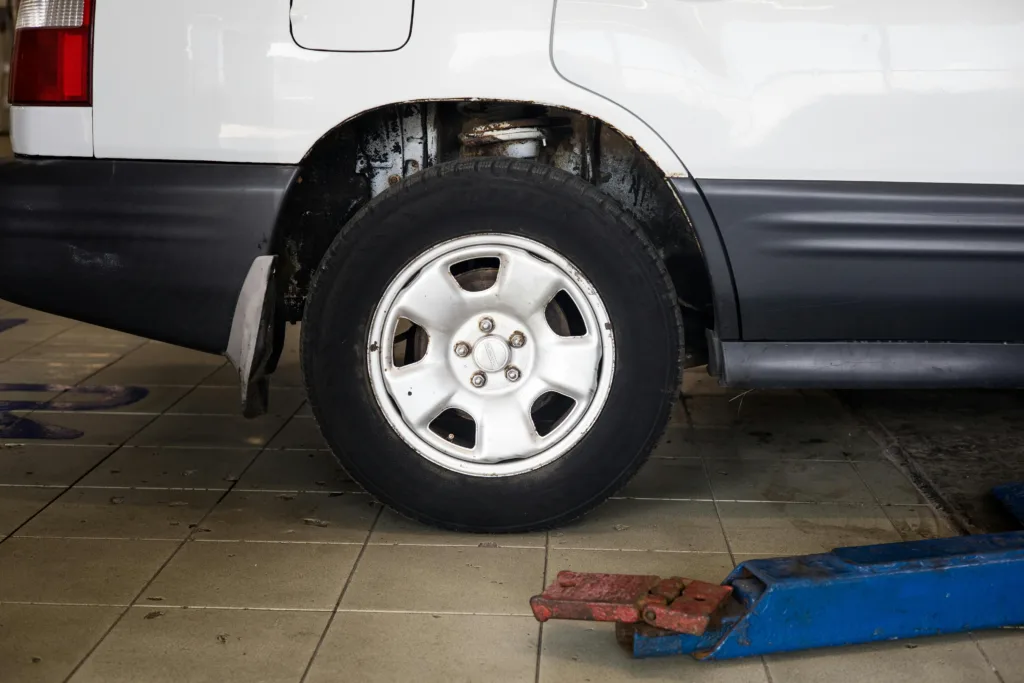Polyaspartic garage floor coatings have revolutionized the world of home and commercial flooring.
These high-performance solutions offer unparalleled durability, UV resistance, and a sleek, professional appearance that elevates any space. However, to ensure your polyaspartic floors maintain their luster and longevity, proper cleaning and maintenance practices are essential.
In this comprehensive guide, we’ll delve into the best techniques and strategies to keep your polyaspartic garage floors looking their absolute best for years to come.
What is a Polyaspartic Flooring?
Polyaspartic floor coatings are a cutting-edge alternative to traditional epoxy systems, boasting a unique blend of polyaspartic resins and specialized additives.
These coatings are known for their rapid curing time, exceptional abrasion and impact resistance, and remarkable resilience against chemicals and UV damage.
Polyaspartic floors provide a seamless, non-slip surface that not only enhances the visual appeal of your garage but also offers superior protection for the underlying concrete.

Benefits of Polyaspartic Flooring
- Unmatched Durability: Polyaspartic coatings are engineered to withstand heavy foot traffic, the impact of machinery, and the rigors of daily use, making them an ideal choice for garages, workshops, and industrial settings.
- Rapid Curing Time: Unlike traditional epoxy, polyaspartic coatings cure incredibly fast, allowing for a quick and efficient installation process with minimal downtime.
- Chemical and UV Resistance: Polyaspartic floors are highly resistant to a wide range of chemicals, stains, and UV exposure, ensuring they maintain their vibrant appearance over time.
- Improved Safety: The slip-resistant surface of polyaspartic floors helps to reduce the risk of accidents and injuries, providing a secure footing in high-traffic areas.
- Easy Maintenance: Polyaspartic coatings are designed to be simple to clean and maintain, making them a low-hassle flooring solution for busy homeowners and business owners.
Establishing a Cleaning Routine
Maintaining the pristine appearance and long-term performance of your polyaspartic garage floor requires a consistent cleaning routine. By following these essential steps, you can ensure your floors remain in top condition for years to come.
Step 1: Frequent Sweeping and Vacuuming
Begin by regularly sweeping or vacuuming your polyaspartic floor to remove any loose dirt, debris, or grit. This proactive measure helps to prevent these abrasive particles from being ground into the surface, which could potentially lead to scratches or premature wear. Opt for a soft-bristle broom or a vacuum with a soft attachment to avoid damaging the coating.
Step 2: Periodic Mopping with a pH-Neutral Cleaner
In addition to daily sweeping or vacuuming, it’s crucial to mop your polyaspartic floor on a regular basis using a pH-neutral cleaning solution. Avoid harsh, acidic cleaners, as they can compromise the integrity of the coating over time. Look for a specifically formulated polyaspartic floor cleaner or create your own solution by mixing warm water and a few drops of a mild, pH-neutral detergent.
Step 3: Immediate Spill Cleanup
Polyaspartic floors are highly resistant to stains and chemical spills, but it’s still essential to address any spills or splatters as soon as they occur. Quickly blotting up the spill with a clean, absorbent cloth or paper towel can help prevent the contaminant from penetrating the coating and causing long-term damage.
Step 4: Avoiding Abrasive Cleaners
While polyaspartic floors are known for their exceptional abrasion resistance, it’s important to avoid the use of harsh, abrasive cleaners. These products can gradually wear down the protective coating, leading to a dull or discolored appearance over time. Stick to non-abrasive, pH-neutral cleaners to maintain the glossy finish of your polyaspartic floor.
Step 5: Periodic Sealing (Optional)
To further enhance the longevity and visual appeal of your polyaspartic floor, consider applying a clear, polyaspartic-specific sealer every 6 to 12 months. This additional layer of protection helps to preserve the coating’s sheen and guard against any potential wear or damage. Be sure to select a sealer that is explicitly designed for use on polyaspartic surfaces.
Protecting Your Polyaspartic Floor Between Cleanings
In addition to regular cleaning, there are several steps you can take to safeguard your polyaspartic garage floor and prevent unnecessary wear and tear.
Avoiding Heavy Dragging
Refrain from dragging or sliding heavy equipment, furniture, or other objects across the surface of your polyaspartic floor. This type of abrasive action can potentially scratch or gouge the coating, compromising its protective capabilities. When moving heavy items, place a cloth or blanket underneath to create a barrier and minimize the risk of damage.
Utilizing Floor Mats and Coverings
In high-traffic areas or where you anticipate heavy use, consider placing protective mats or coverings over your polyaspartic floor. This can help to safeguard the surface from the wear and tear caused by foot traffic, vehicle tires, or the constant movement of equipment and tools.
Proper Cleaning of Vehicles and Equipment
Be mindful of the debris and contaminants that may be introduced to your polyaspartic floor through the vehicles, machinery, or equipment that enter your garage. Make it a habit to clean these items before bringing them inside, as this can help to minimize the accumulation of abrasive particles that could potentially damage the floor over time.
Troubleshooting Common Challenges
While polyaspartic floors are designed to be highly durable and low-maintenance, there may be instances where you encounter specific challenges or concerns. By addressing these issues promptly, you can ensure the continued performance and pristine appearance of your garage flooring.
Addressing Discoloration or Fading
If you notice any discoloration or fading of your polyaspartic floor, it may be due to exposure to harsh chemicals, excessive UV radiation, or improper cleaning methods. In such cases, consider re-applying a clear polyaspartic sealer to restore the original luster and protection.
Removing Stubborn Stains or Spills
For particularly stubborn stains or spills, you may need to employ a more targeted cleaning approach. Begin by blotting the affected area with a clean, absorbent cloth to remove as much of the contaminant as possible. Then, use a small amount of a specially formulated polyaspartic floor cleaner or a mild, pH-neutral detergent diluted in water, and gently scrub the area with a soft-bristle brush or mop. Rinse thoroughly with clean water to remove any residual cleaning solution.
Addressing Scratches or Gouges
While polyaspartic floors are highly resistant to scratches and gouges, it’s possible that heavy impacts or the dragging of sharp objects could potentially cause some surface damage. In these instances, you may need to consult with a professional flooring contractor to assess the extent of the damage and determine the best course of action for repair or resurfacing.
Maximizing the Lifespan of Your Polyaspartic Floors
By adhering to a comprehensive cleaning and maintenance regimen, you can ensure that your polyaspartic garage floors maintain their exceptional performance and visual appeal for years to come. Remember, proactive care and attention to detail are the keys to unlocking the full potential of your investment.
The Benefits of Proper Maintenance
Consistent cleaning and maintenance of your polyaspartic floors not only preserves their aesthetic appeal but also extends their overall lifespan. By preventing the buildup of dirt, debris, and potential contaminants, you can safeguard the integrity of the coating and minimize the risk of premature wear or damage.
Partnering with Flooring Experts
If you ever feel overwhelmed or uncertain about the best way to care for your polyaspartic floors, don’t hesitate to reach out to a reputable flooring contractor or specialist. These professionals can provide personalized guidance, offer recommendations for optimal cleaning products and techniques, and even assist with any necessary repairs or resurfacing.
Embracing the Long-Term Value
Investing in high-quality polyaspartic flooring for your garage or commercial space is a decision that can pay dividends for many years to come. By following the maintenance best practices outlined in this guide, you can enjoy the long-lasting durability, easy upkeep, and stunning aesthetic of your polyaspartic floors, making them a truly worthwhile investment in the overall value and functionality of your property.
